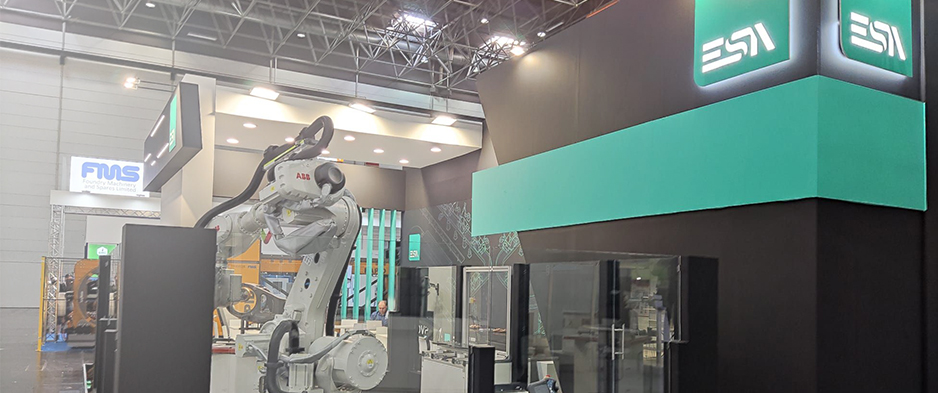GIFA 2023 – Total Flexibility for the Foundry
From 12 to 16 June 2023, ESA participated in GIFA, the reference fair for the foundry industry. For the occasion, we presented our finishing cell, a solution that guarantees total flexibility for the foundry.
GIFA, the international foundry fair
At its fifteenth edition, GIFA is the most important trade fair in the world of technology for the foundry industry. In its exhibition portfolio it boasts numerous internationally renowned participants, including foundries, manufacturers of plants and machinery for the production of molds and cores, companies specialized in control and automation technology, and companies engaged in the formulation of materials aimed at protecting the environment and waste disposal.
The program of the fair is full of seminars, international congresses, conferences and other events focused on the future of the foundry industry. The central themes of the 2023 edition were:
Sustainability: Energy transition and climate change have required a major restructuring of the foundry industry. Renewable energies, energy saving, technologies for decarbonisation are topics increasingly at the center of attention in this sector.
Digitization: From digitizing the casting process to optimizing casting parameters through Artificial Intelligence (AI) up to Foundry 4.0.
Circular Economy: Iron, aluminum and non-ferrous metals are the materials that best support circular value cycles. Foundries are in fact at the heart of the development of modern recycling towards a circular economy, with the aim of extending the life of products through the optimization of production and sustainable and environmentally friendly use.
New materials and innovative production technologies: Such as additive manufacturing for example.
ESA finishing cell: total flexibility for the foundry
ESA exploits its know-how to develop new solutions for the machining of burrs and surface defects. We tailor software to individual needs to make our customers more competitive.
In the case of the finishing cell presented at GIFA 2023, all the castings coming from the mold with different burrs and sprues are left inside to obtain a high quality product. Here are the main features:
- Speed: shorter cycle times compared to manual machining.
- Small batches: The speed of off-line programming allows for efficient management of small-scale production.
- Adherence to the real shape of the piece: the adaptive algorithm allows to compensate for any deformations which may occur during the production process of the casting.
- Adaptive Technology: The adaptive algorithm is responsible for correcting the CAM generated toolpath to fit the actual shape of the part, calculated by measuring points on the surface.
- Robot CMM: The robot can be used as a CMM unit. The measurement system allows to check the size and tolerance of the workpieces. This preliminary check allows to make a preventive selection of the pieces that do not correspond to the defined dimensional parameters.
- Multifunctionality: Our robotic systems are multifunctional.
- 3D cut: unlike a traditional CNC, the robot can perform both two-dimensional and three-dimensional cuts.
- Post-processing strategies: ROBOmove™ allows the user to choose the strategy with which to manage the robot axes from a wide variety of automatic and/or manual possibilities. This allows you to optimize the movement of the tool according to the specific application.

